Year 8 Types of Number Worksheets
Factors
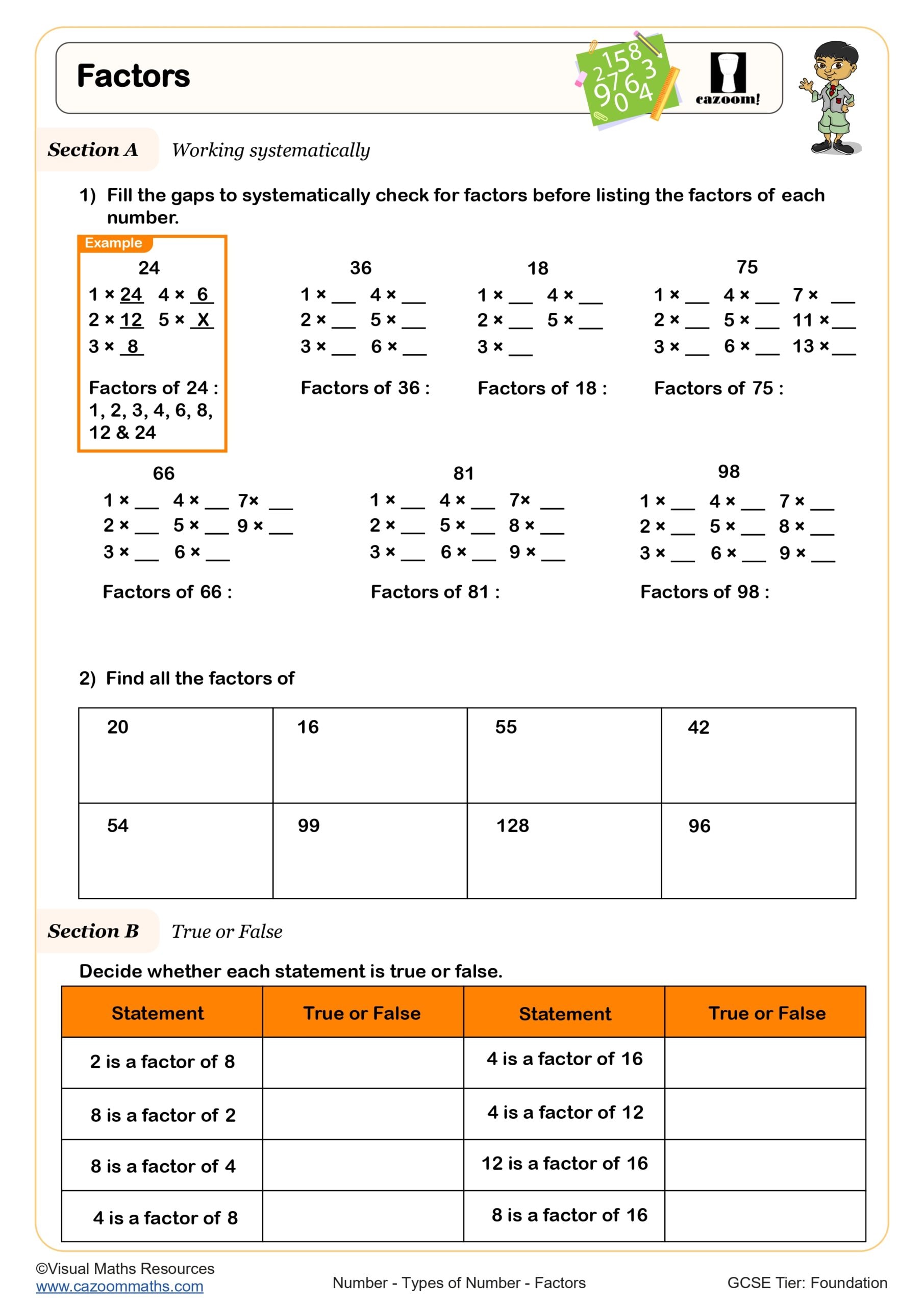
Factors and Primes
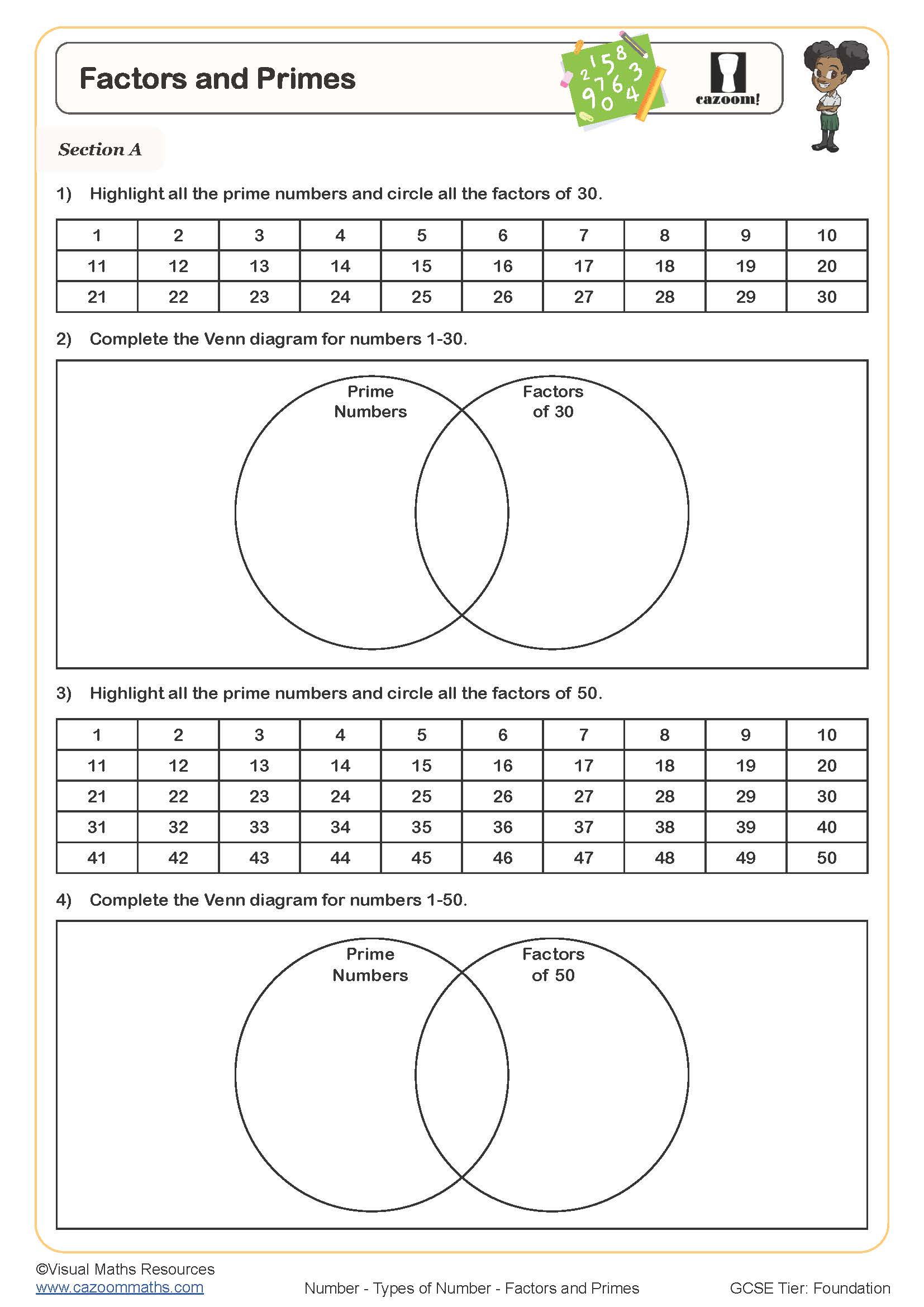
Finding HCF and LCM - Including the Use of Venn Diagrams
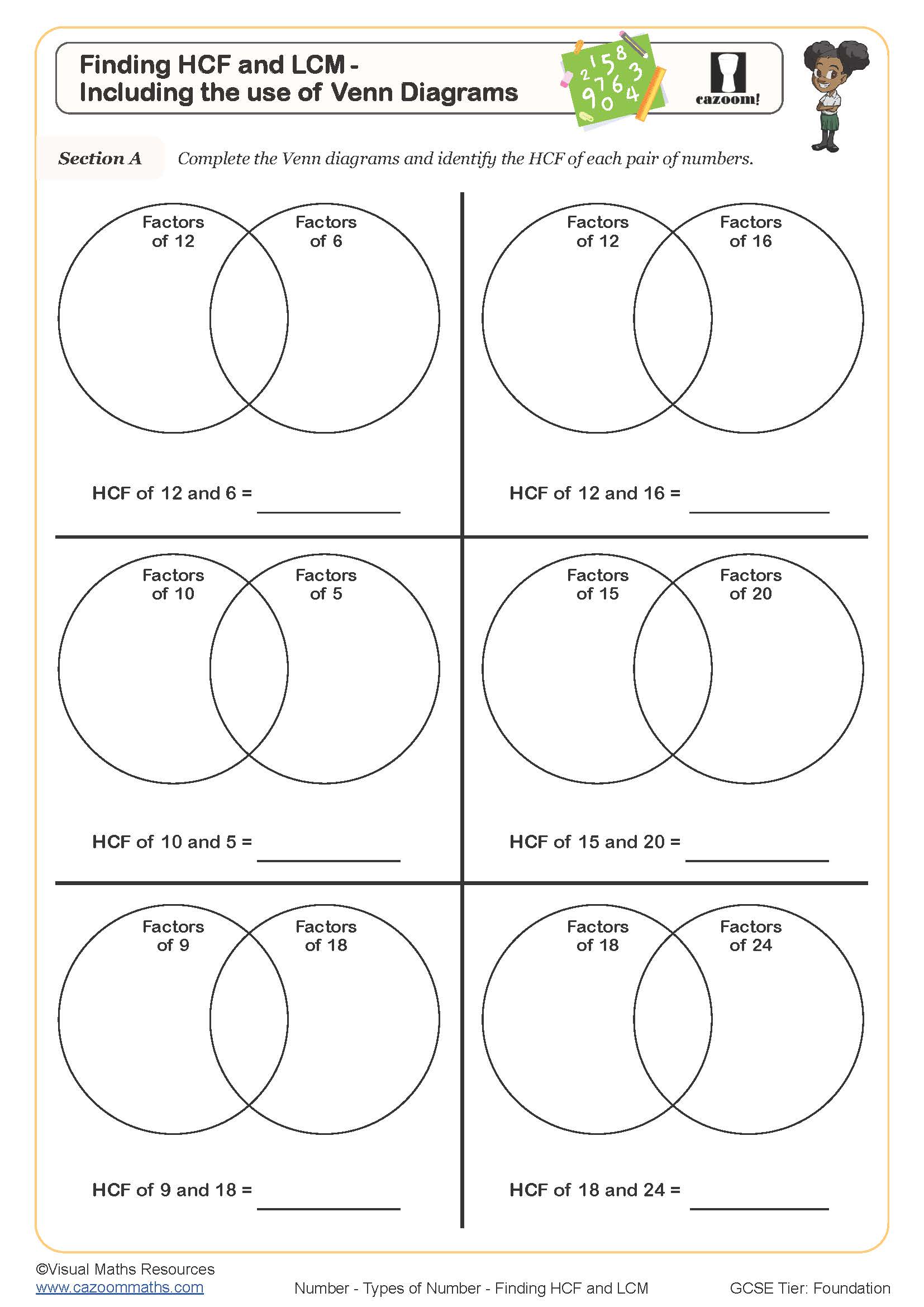
Given HCF & LCM - Find Possible Numbers
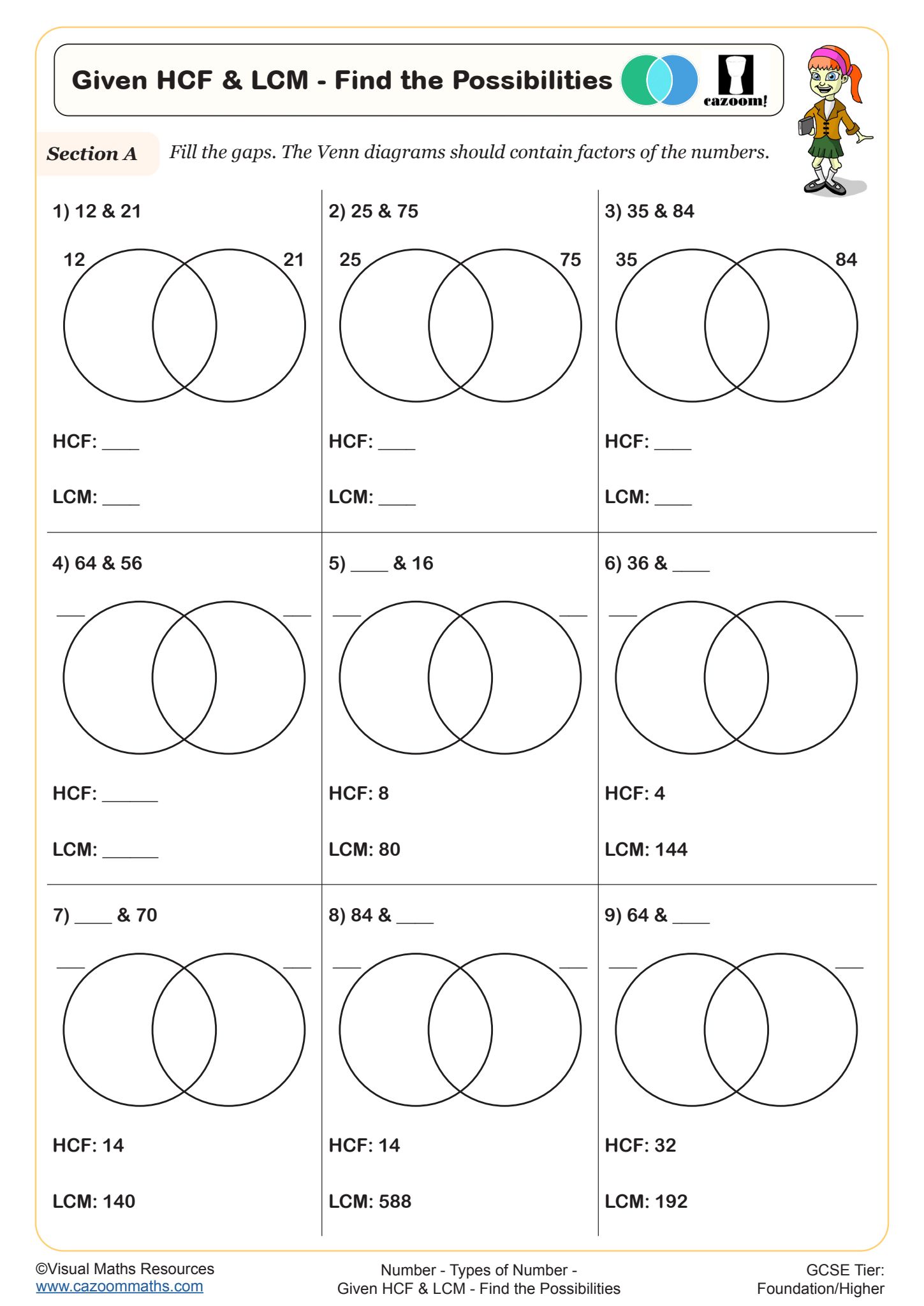
Highest Common Factor
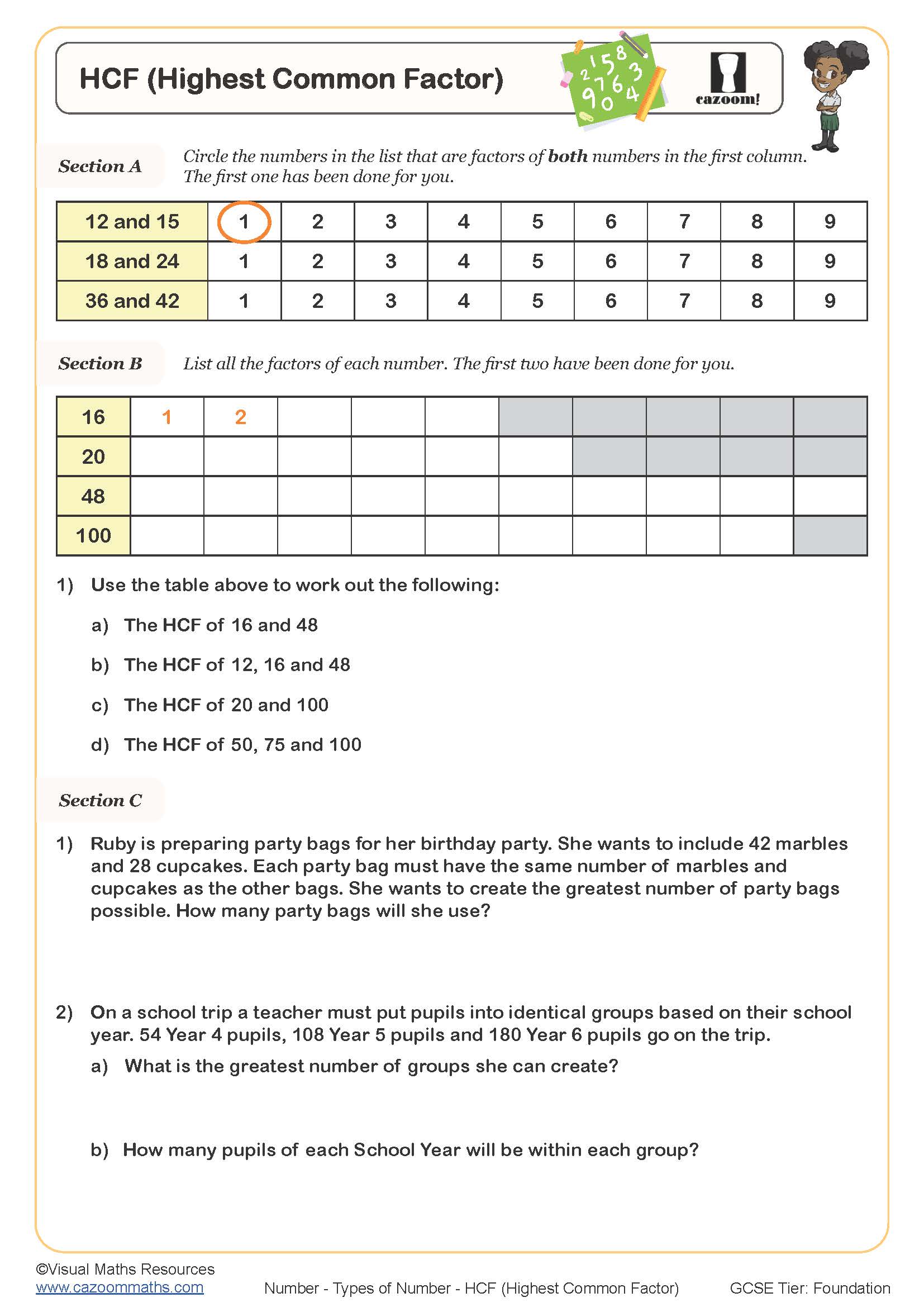
Investigating Prime Factors
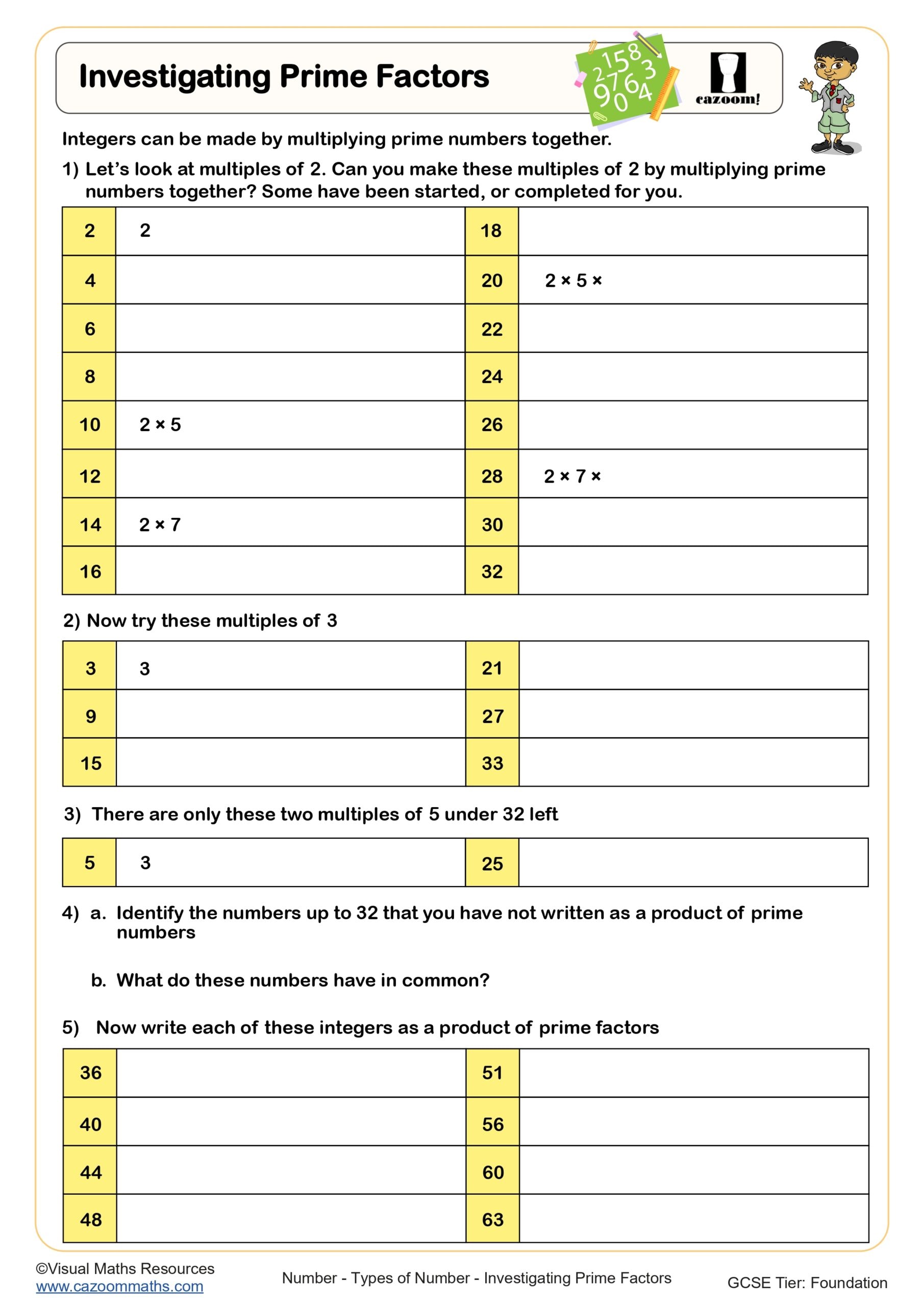
Lowest Common Multiple
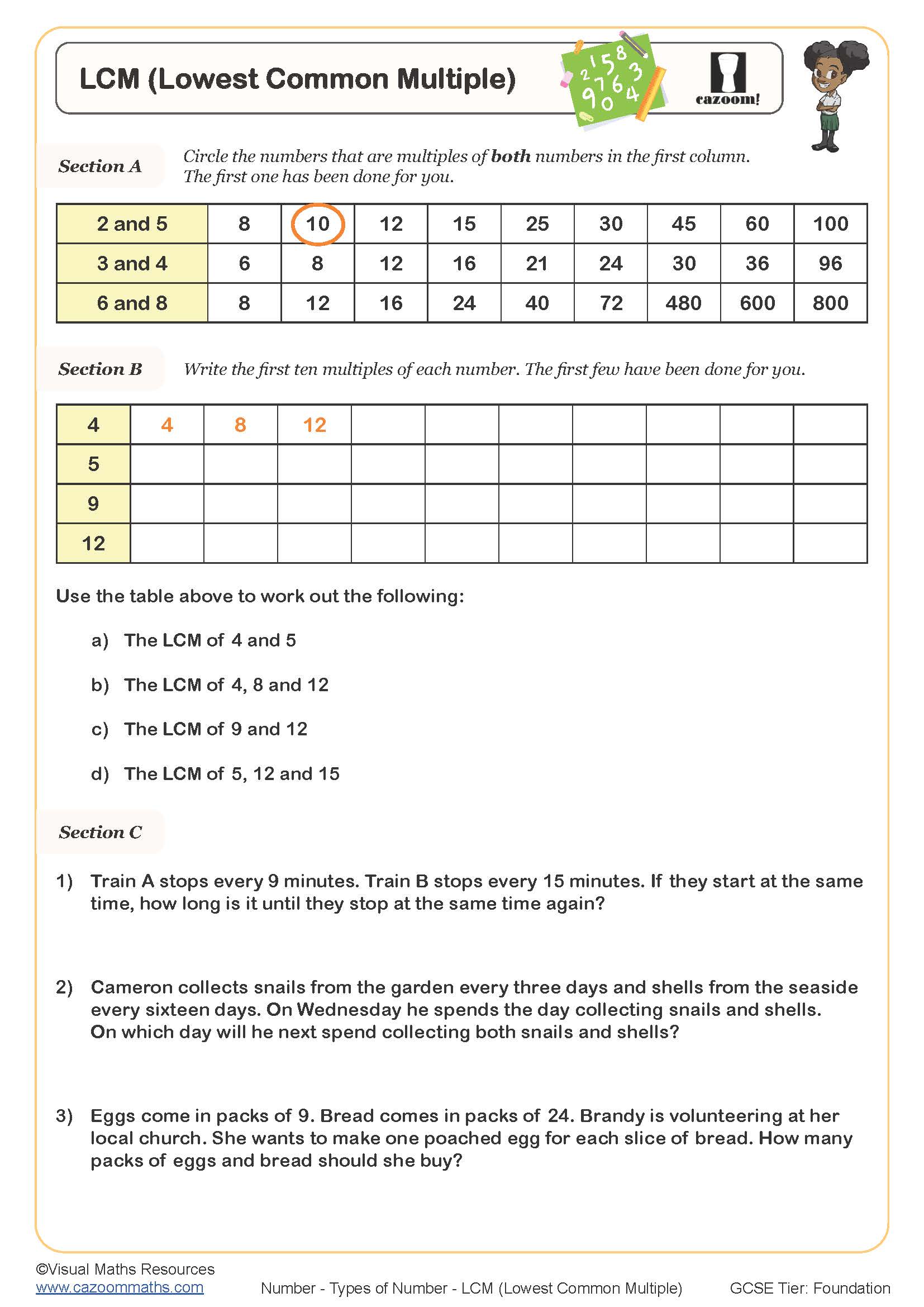
Multiples
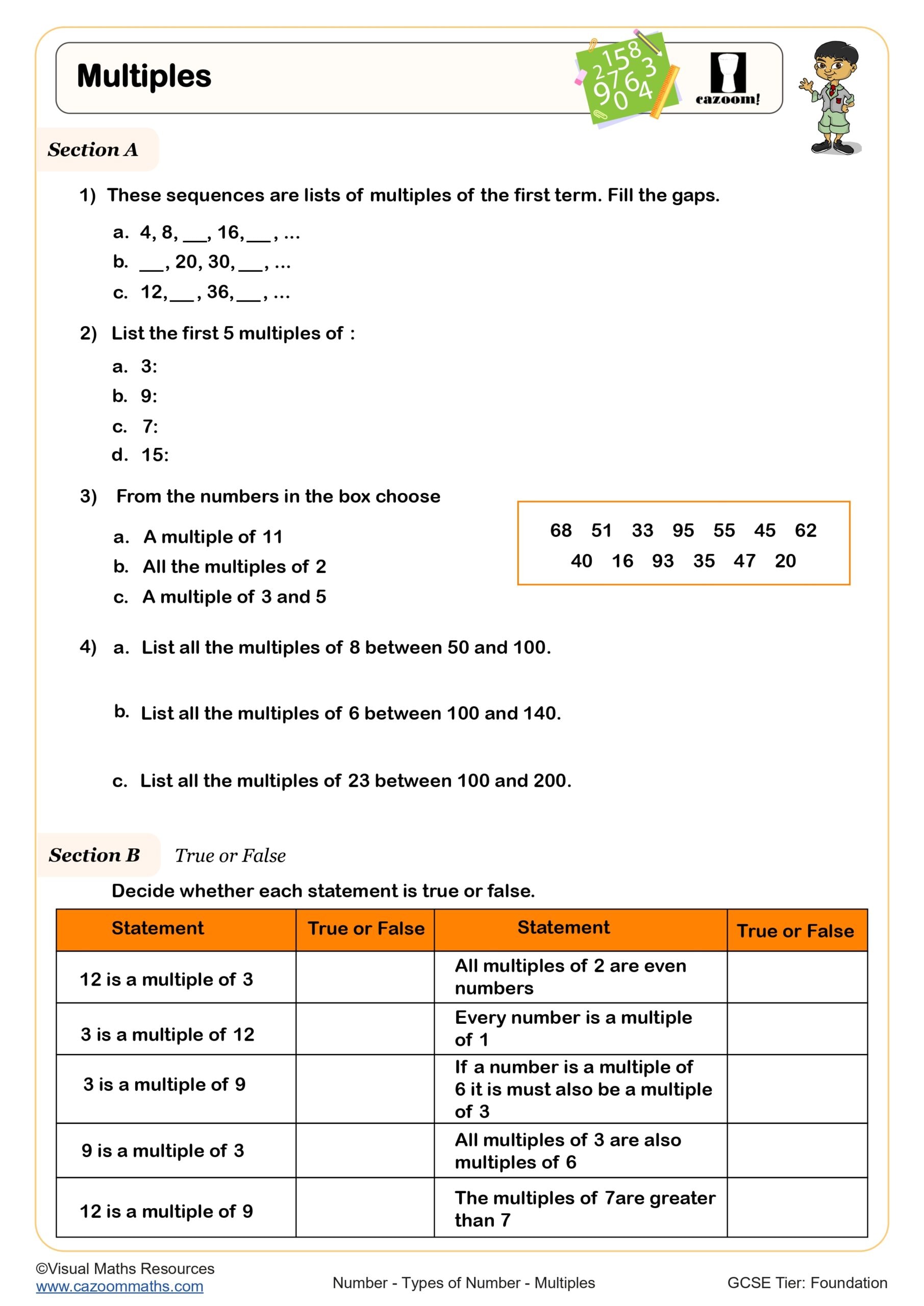
Prime Factor Decomposition - Using the Short Division Method
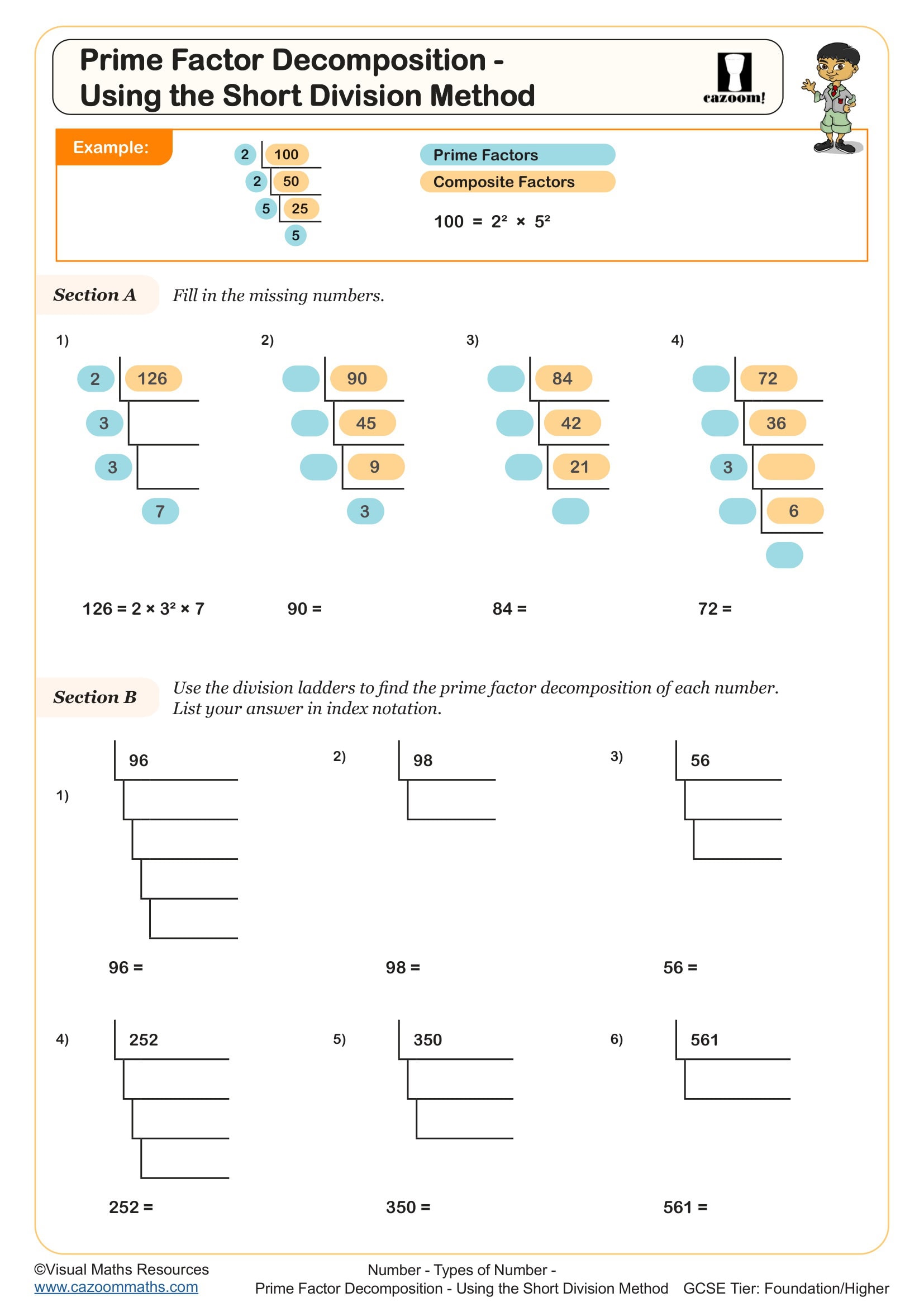
Prime Factor Decomposition Using Factor Trees
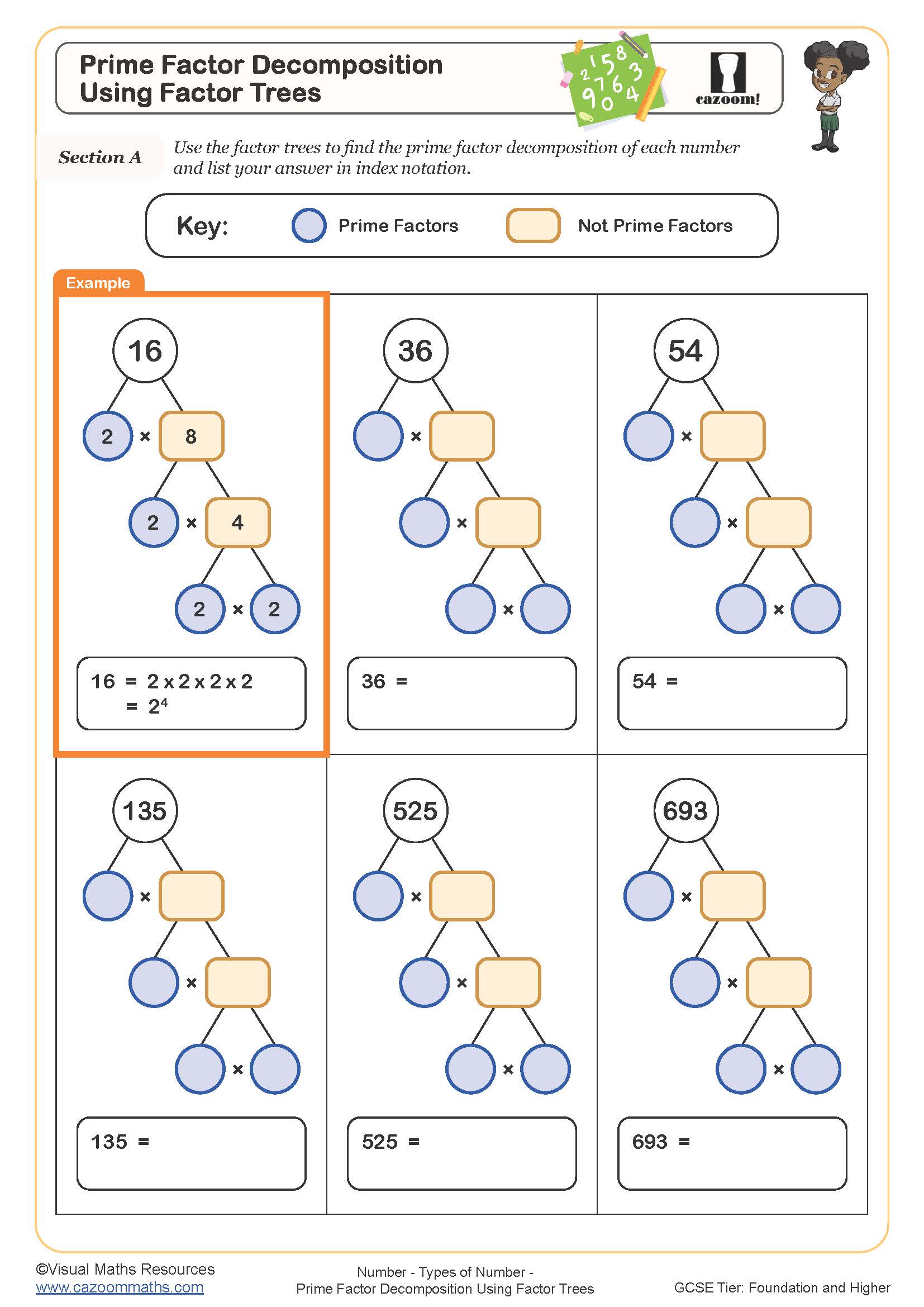
Prime Number Maze
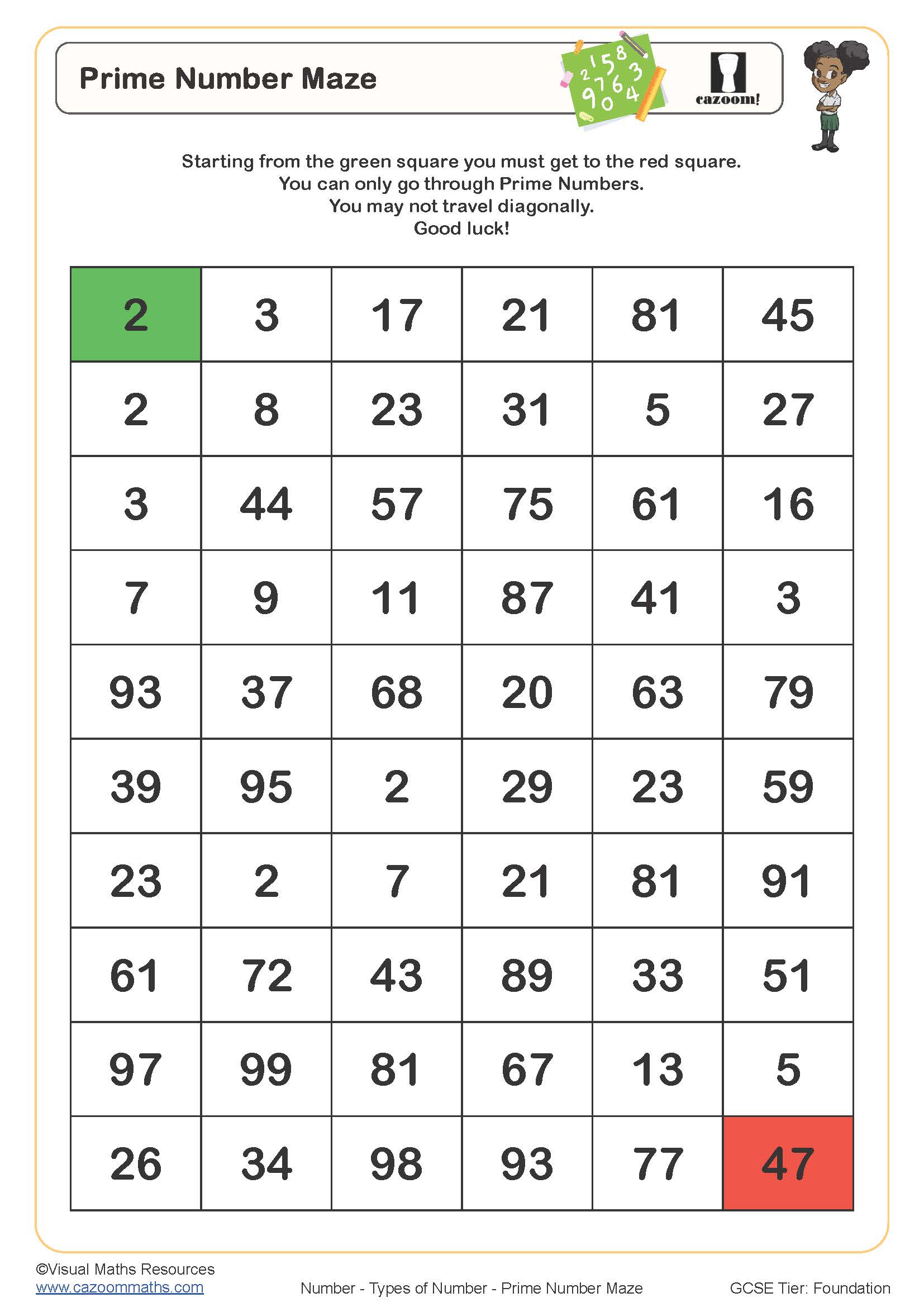
Prime Numbers
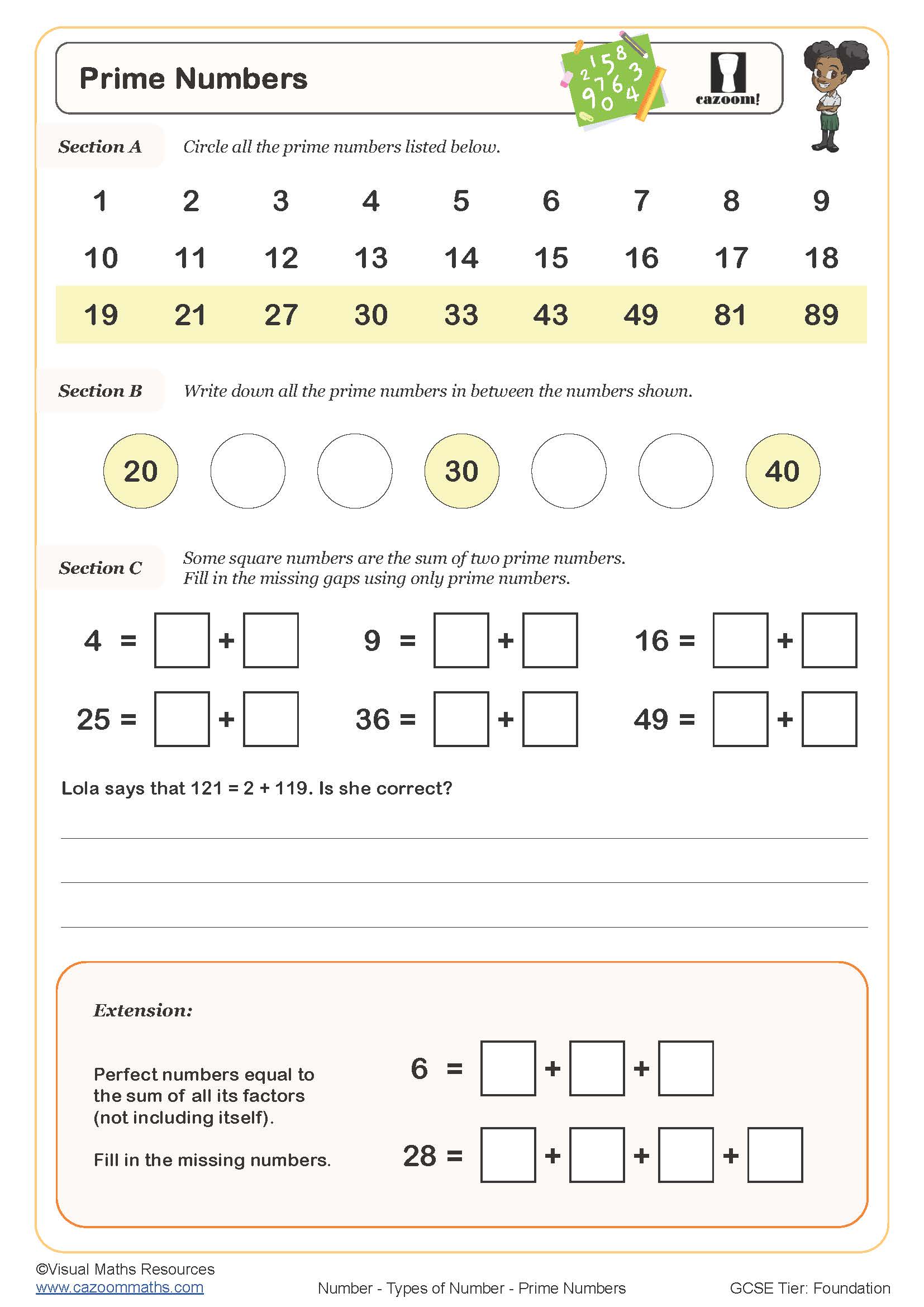
Using Prime Decomposition to Find HCF and LCM (A)
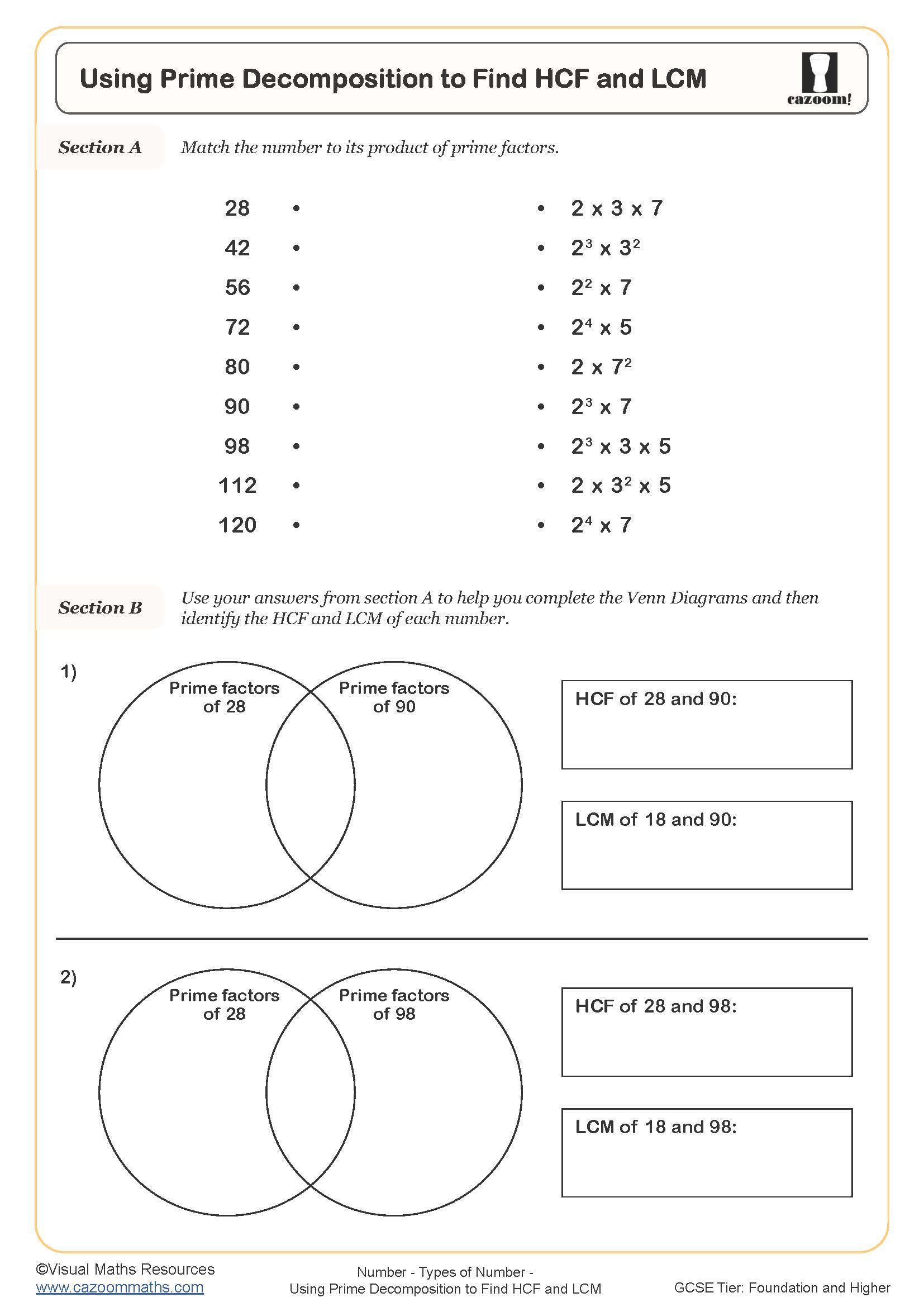
Using Prime Factor Decomposition
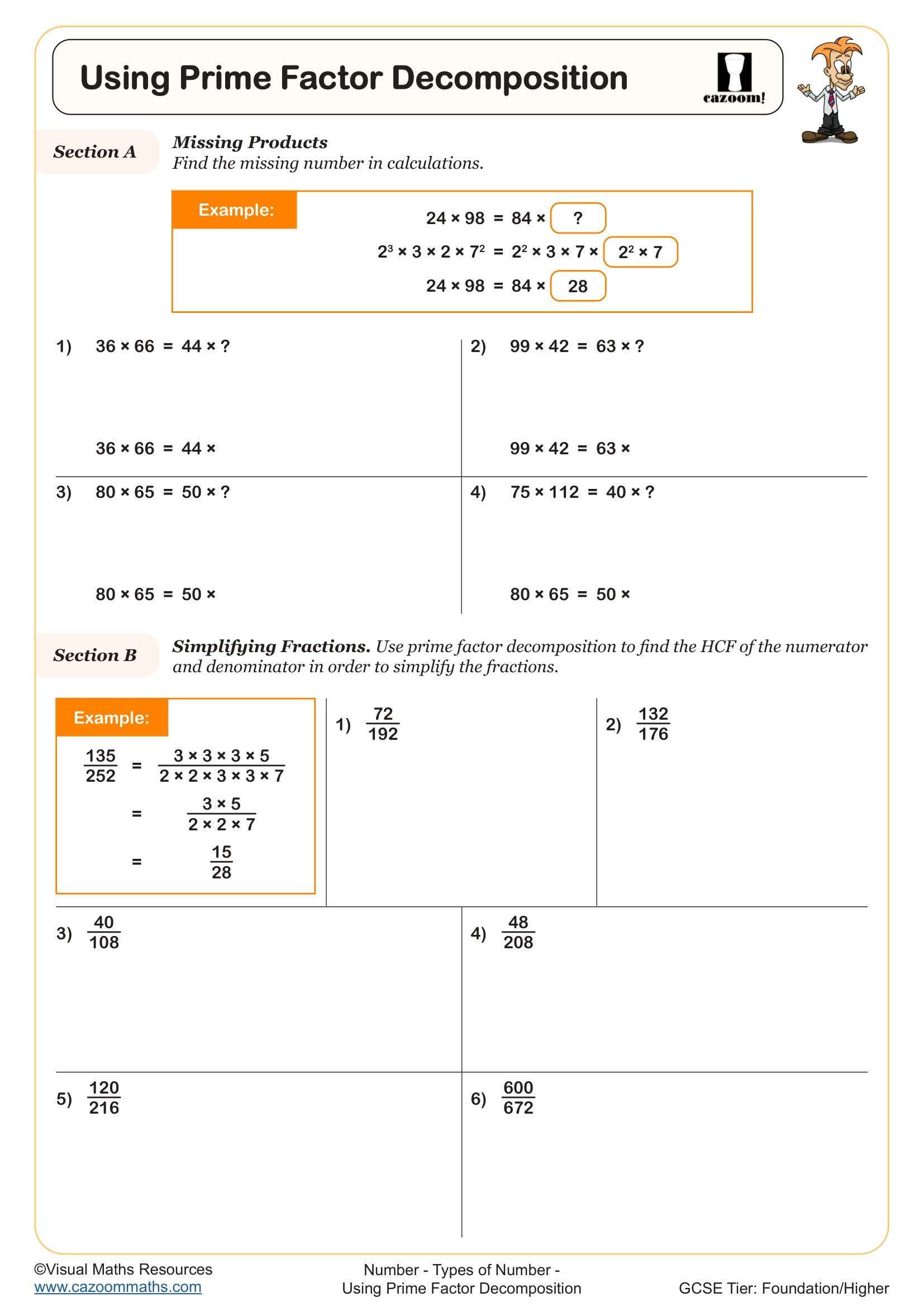
Using Prime Factors to Identify Square, Cube Numbers and Roots
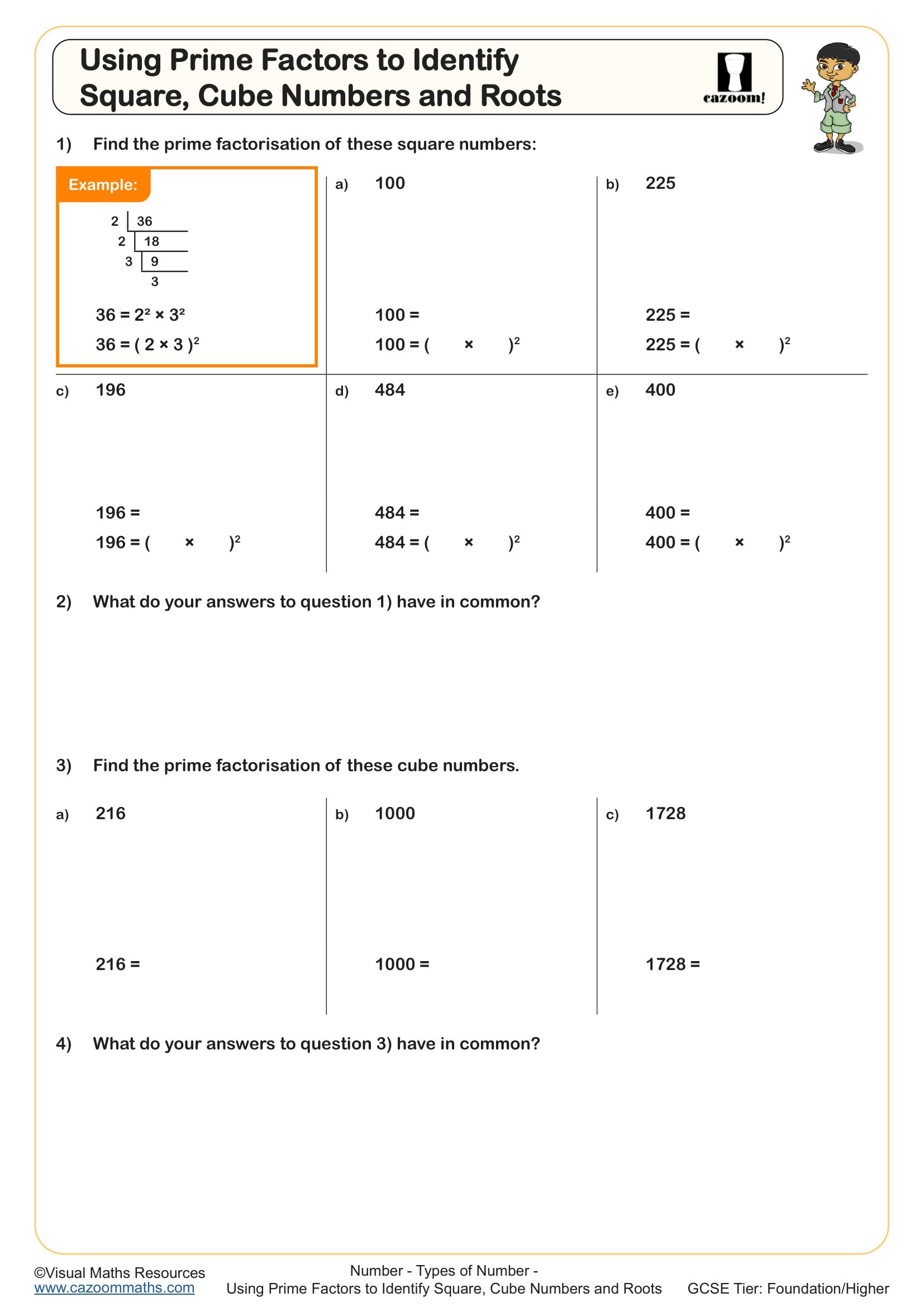
How Year 8 Types of Number Worksheets Raise Attainment
Progress accelerates when connected skills are practised together and revisited regularly. This collection links factors, multiples and primes to HCF/LCM procedures, so learners see when to use factor trees, short division, or Venn diagrams—and why. Brief, well-scaffolded tasks expose common slips (confusing factors with multiples, misreading prime powers), while structured prompts nudge students towards estimates and reasonableness checks. A light touch on context keeps attention on method and accuracy, building fluency that supports later algebraic manipulation and ratio problems. Use the sheets in sequence or as targeted retrieval to maintain momentum across the year.
Specific learning benefits include:
• Fluency with HCF and LCM across varied question types
• Accurate prime factorisation using trees and short division
• Confident divisibility reasoning and factor/multiple classification
• Strategic selection of efficient methods for given numbers
• Robust estimate-and-check habits for error spotting
• Secure use of index notation for squares, cubes and powers
What Year 8 Types of Number Worksheets Cover in KS3 Maths
Learners move from concrete visuals (arrays, factor trees, Venn diagrams) to compact symbolic work with prime powers. Every worksheet includes step-by-step answers so pupils can follow a sensible route from method selection to result and self-correct effectively.
The worksheets in this collection include:
• Factors and Multiples: Exploring how numbers break down and connect through factors, multiples, and divisibility.
• Primes and Prime Factorisation: Building strong foundations with prime numbers and their unique role in number structure.
• HCF and LCM Applications: Practising highest common factor and lowest common multiple problems using clear strategies.
• Using Prime Decomposition: Applying prime power methods to solve problems and recognise squares, cubes, and roots.
• Games and Investigations: Making number practice engaging through puzzles and exploratory activities.
Why Teachers Rate These Year 8 Types of Number Worksheets
Classroom-ready design and clean progression make the sets easy to deploy with mixed-attainment groups. The practice begins with brief tasks that help participants start fast while the practice remains meaningful through small changes between tasks and the extension prompts provide additional challenge without adding unnecessary complexity. The use of consistent formatting helps students reduce their mental effort because it enables them to concentrate on their method selection and presentation of work. The answer sheets included in the material help students save time on planning while showing the complete solution process which enables them to understand different methods and improve their problem-solving skills. The collection provides a perfect fit for your teaching needs because it offers complete lessons and dependable homework and short interventions which support exact number work starting from page one.
Where Year 8 Types of Number Skills Show Up in Real Life
Number properties appear wherever quantities repeat, combine, or need fair sharing—making these skills genuinely useful beyond the classroom.
• Aligning bus, train, or lesson cycles using LCM
• Splitting items or costs into equal groups via HCF
• Planning pack sizes and batches to reduce waste in DT/food tech
• Designing workout circuits with repeating intervals and rounds
• Checking tiling or brick patterns using factors and multiples
• Verifying square/cube dimensions in DIY and model-making
• Scheduling tournament rounds and byes on common cycles
• Understanding the basic idea behind codes that use prime numbers